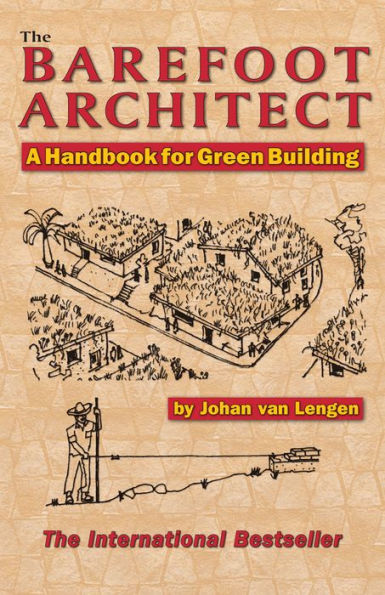

Paperback
-
PICK UP IN STORECheck Availability at Nearby Stores
Available within 2 business hours
Related collections and offers
Overview
Whether you’re a DIY builder or simply want to understand construction to better communicate with your contractor, Johan van Lengen can help. As a former United Nations worker and prominent architect, Johan has seen, firsthand, the need for a green approach to housing. This comprehensive book clearly explains every aspect of this endeavor, including design, materials, and implementation.
Discover the many options and important decisions you can make—such as siting and climate considerations—that are inexpensive, sustainable, and could save you thousands of dollars while helping the environment. Included are sections about urban planning, small-scale energy production, cleaning and storing drinking water, dealing with septic waste, and more. Plus, all the information is applied to three distinct regions: humid areas, temperate areas, and desert climates. Hundreds of instructional drawings allow even novice builders to get started with ease.
Inside you’ll find:
- Bio-architecture, basic design, and site planning for humid and dry climates
- Material tips about adobe, rammed earth, bamboo, plaster, wood, concrete, and ferro-cement
- Information on foundations, roofs, floors, walls, doors, windows, and eco-techniques
- Introductions to solar heating, water-powered electricity, water purification, composting toilets, and more
The Barefoot Architect is a perfect book for these times of increased worldwide concern for the environment and for those who desire to build eco-conscious dwellings by utilizing natural resources.

Product Details
| ISBN-13: | 9780936070421 |
|---|---|
| Publisher: | Adventure Publications, Incorporated |
| Publication date: | 10/28/2007 |
| Pages: | 720 |
| Sales rank: | 641,863 |
| Product dimensions: | 5.50(w) x 8.50(h) x 1.80(d) |
About the Author
Johan has also worked for the United Nations and a number of government agencies in Latin America. At TIBA, he continues to develop new ideas in construction technology and ways to transfer this knowledge to the self-help builders in his workshops.
Read an Excerpt
Introduction
This manual is for those of you who dream of building a home. I will describe the relationship between a house and its environment: the limitations and the possibilities. I hope that consulting this book will help you find solutions in realizing your dream.
The information presented in this book is mainly graphic. I believe that simple perspective drawings such as these convey information better than page after page of words. The Barefoot Architect is meant not only for individual owner-builders, but also for governmental “sweat equity” programs that require the participation of owner/builders in the community.
I do not necessarily mean to persuade you to build your home in a vernacular manner. The world has changed much; often there are not suitable materials or the skills necessary for vernacular building. In many cases, adhering resolutely to traditional building methods will prove frustrating. The manual is meant to answer the realistic challenges in present-day construction and to suggest practical solutions by combining traditional and modern techniques. At the same time, I do not mean to imply that these proposed alternative methods will automatically produce a miraculous shelter; rather that a combination of these techniques will guide you in providing a harmonious living environment.
The phrase “barefoot architect” was inspired by the first architects, living in the distant past, who mixed adobe by treading mud with their bare feet. Barefoot architects produced the most incredible buildings of antiquity, such as the Hanging Gardens of Babylon.
How to Use This Book
This manual does not propose rigid rules for building but instead shows many ways of building a house while using a wide range of materials, thus giving you a great variety of choices in its construction.
Where you do not do all the building yourself, understanding the concepts and examples in this manual and how these ideas are used during construction will enable you to have a more productive dialogue with the builder in charge.
When using alternative, non-conventional building techniques, you should employ quality-control testing, especially when fabricating critical structural elements. The author is not responsible for any procedure that is not in accordance with accepted structural building safety practices.
Local climate is important to consider when choosing materials and techniques, in order to achieve the greatest environmental harmony with minimum cost.
This book shows a bit of everything. Read all the chapters first before deciding on the most appropriate materials and techniques.
Table of Contents
PrefaceIntroduction
How to Use This Manual
1. Design
2. Humid Tropics
3. Dry Tropics
4. Temperate Zone
5. Materials
6. Construction
7. Energy
8. Water
9. Sanitation
10. Appendix
- Materials and Heat
- Measurements
- Mixtures
- Climate Zones
- Angles
Glossary
Bibliography
Index
